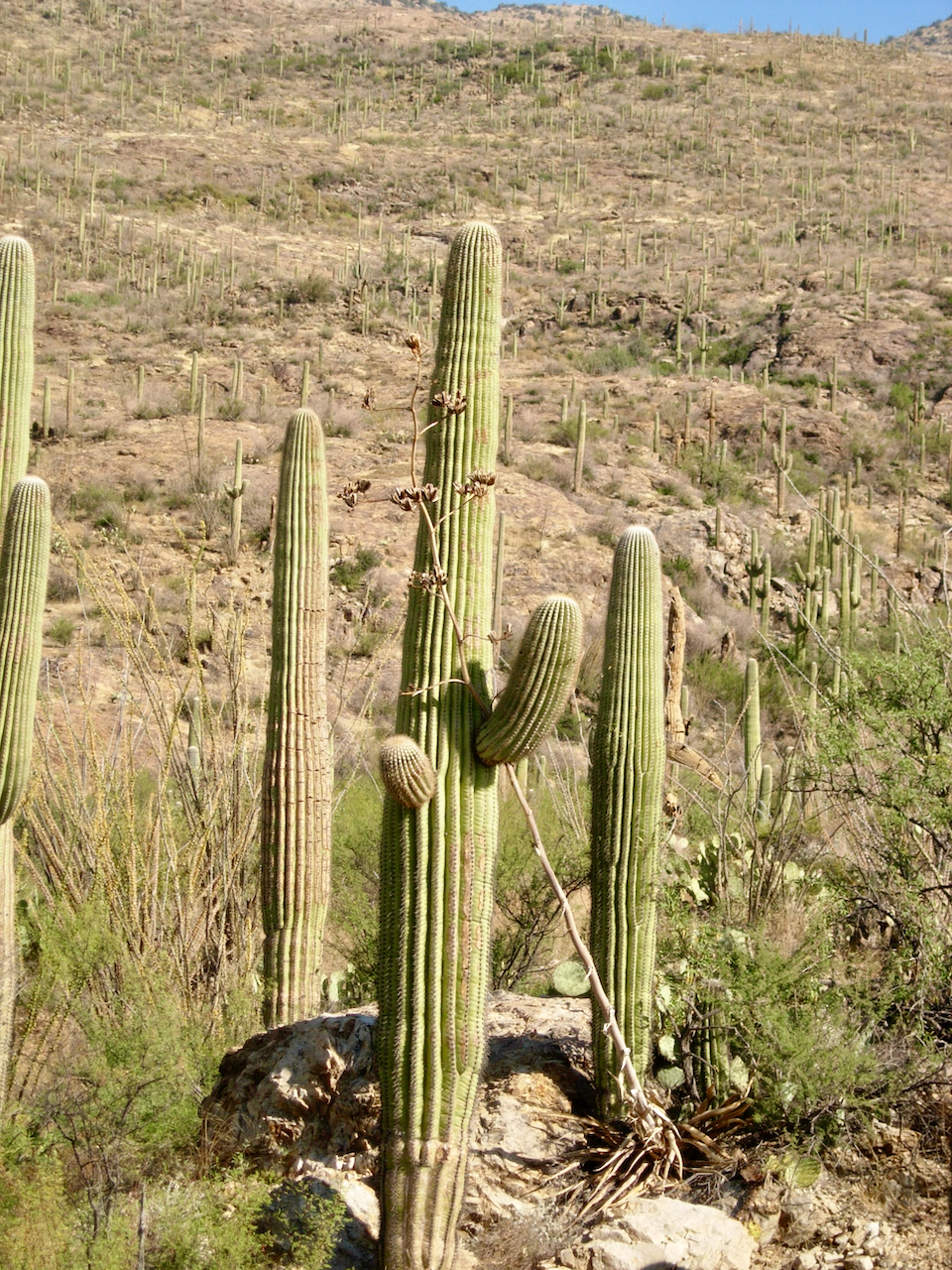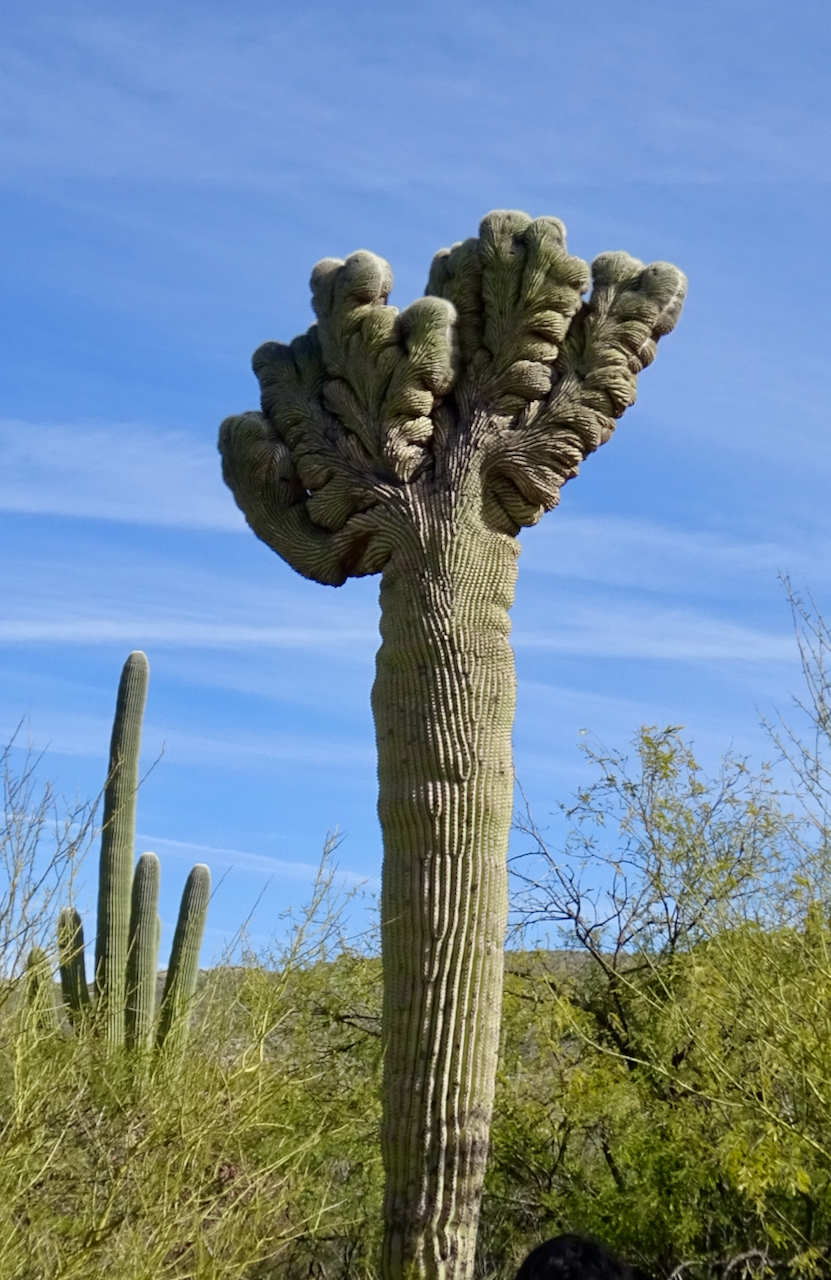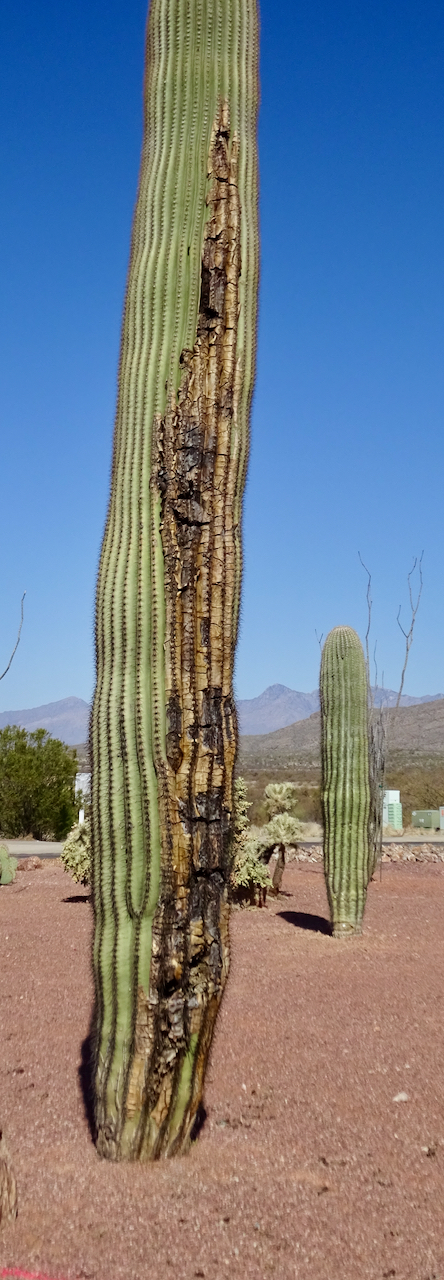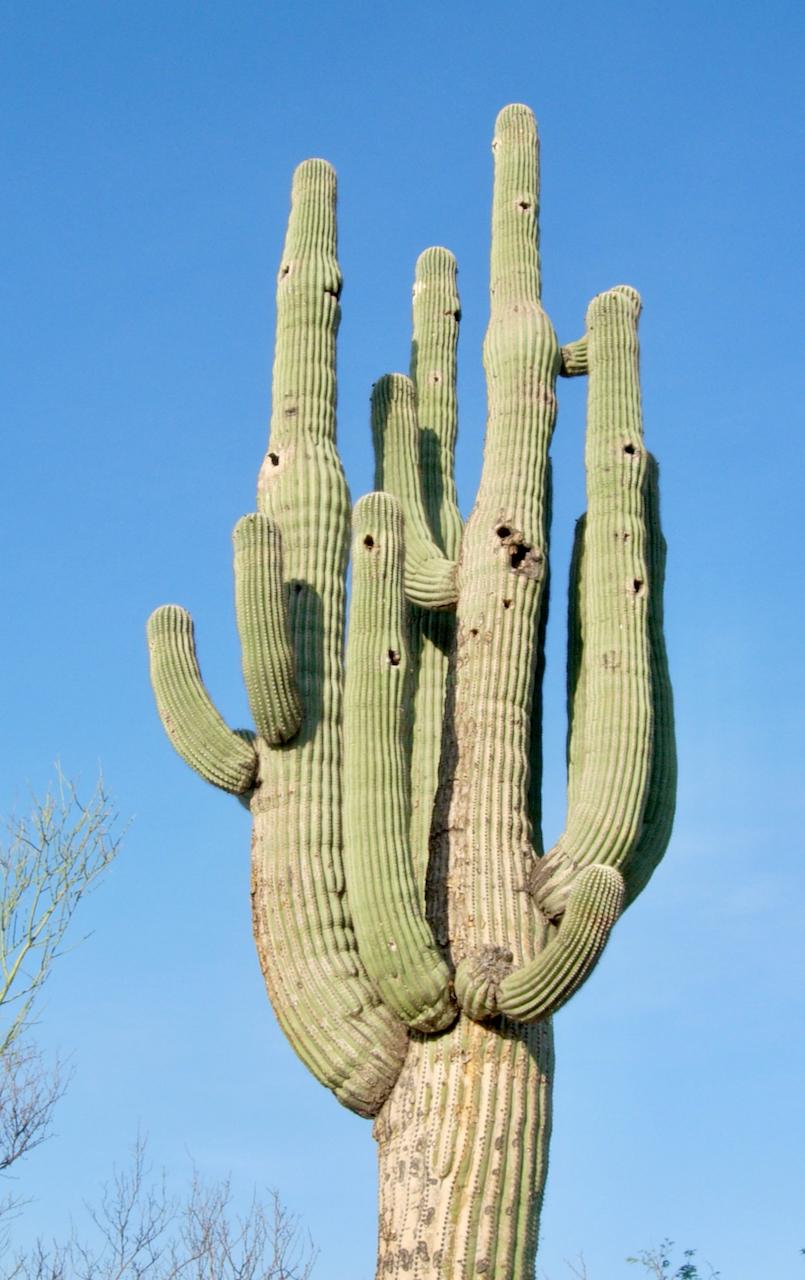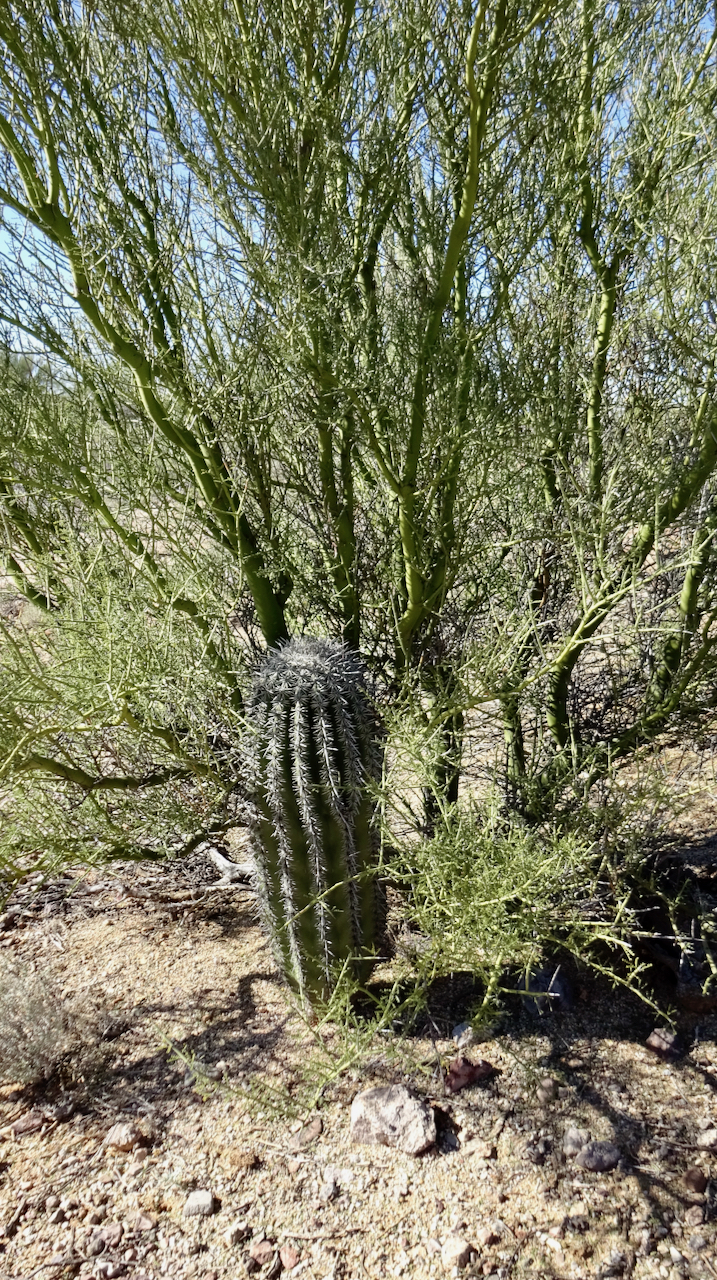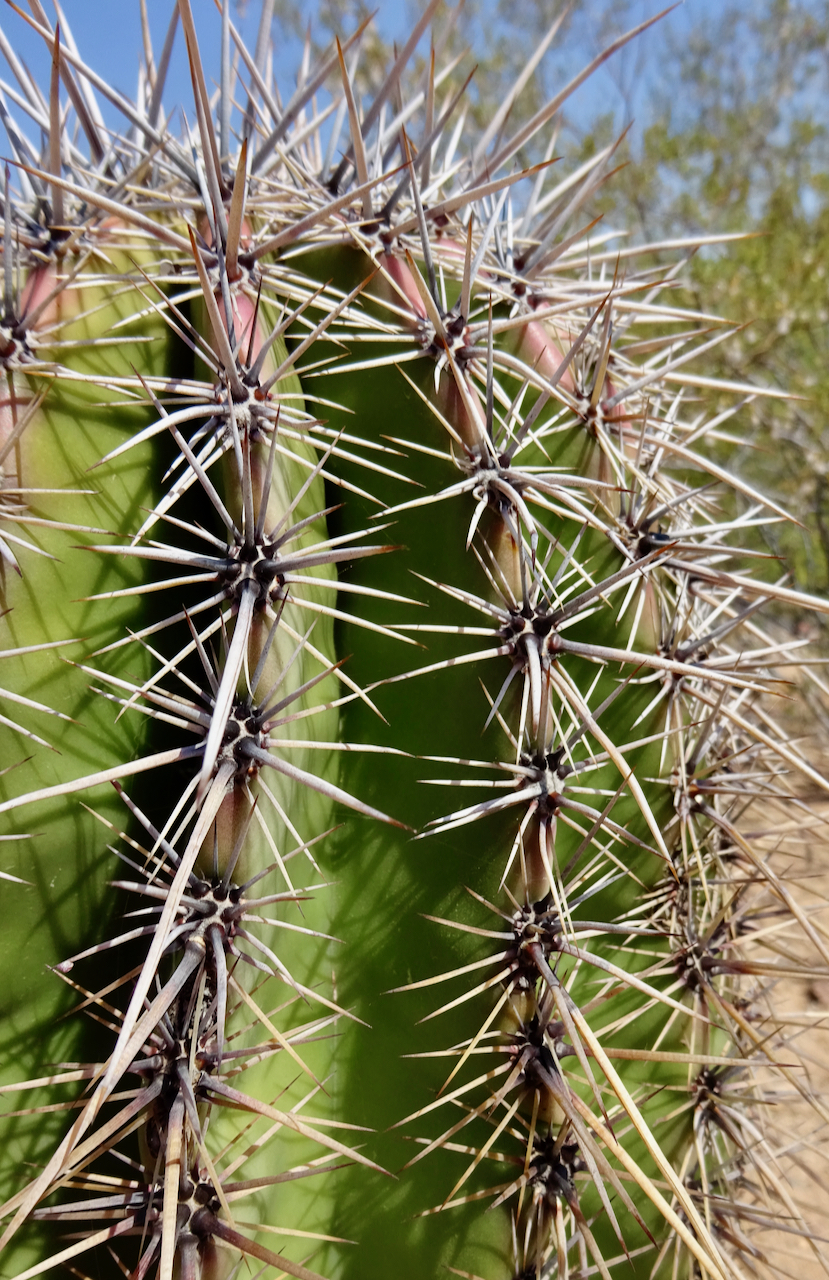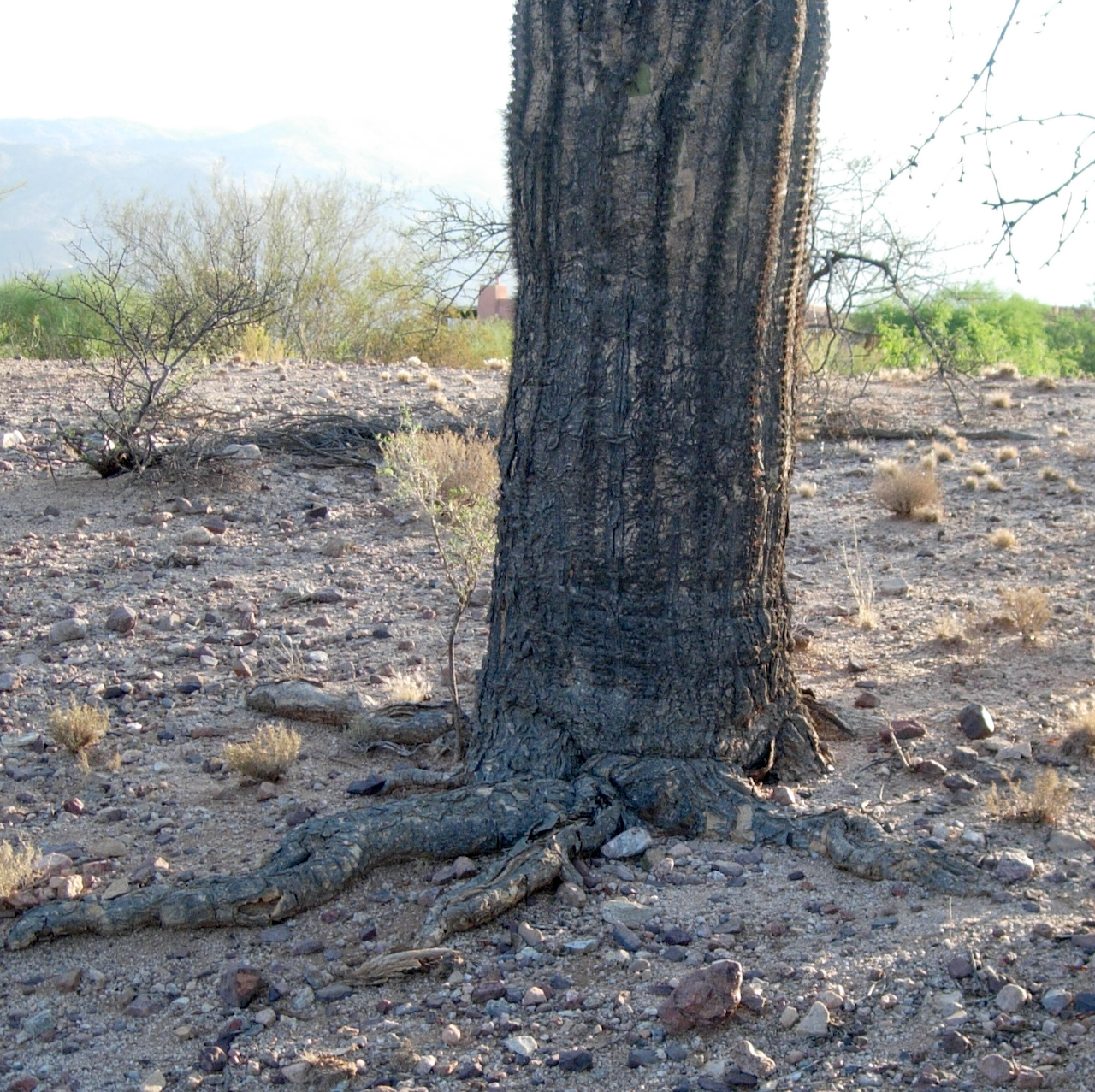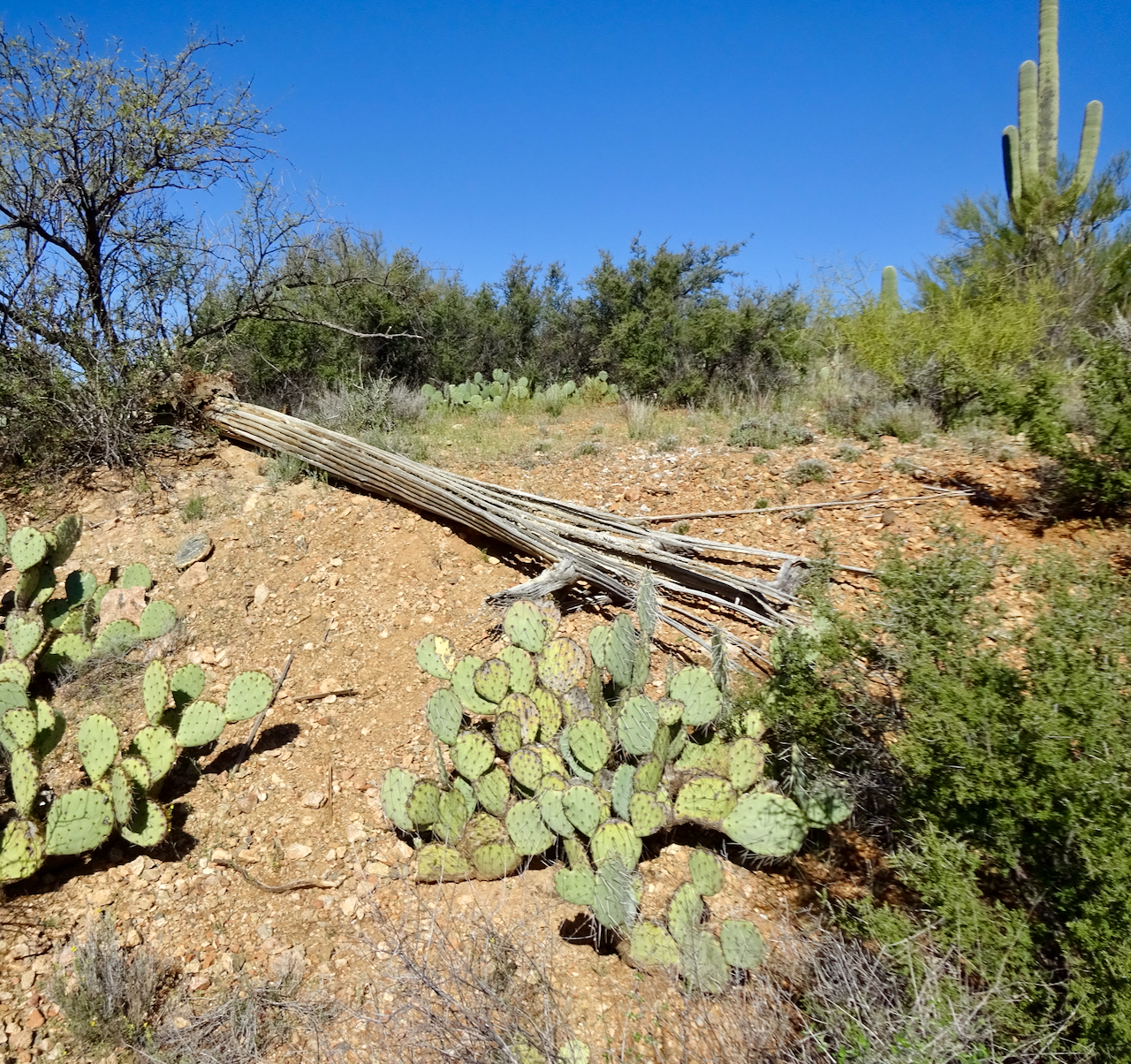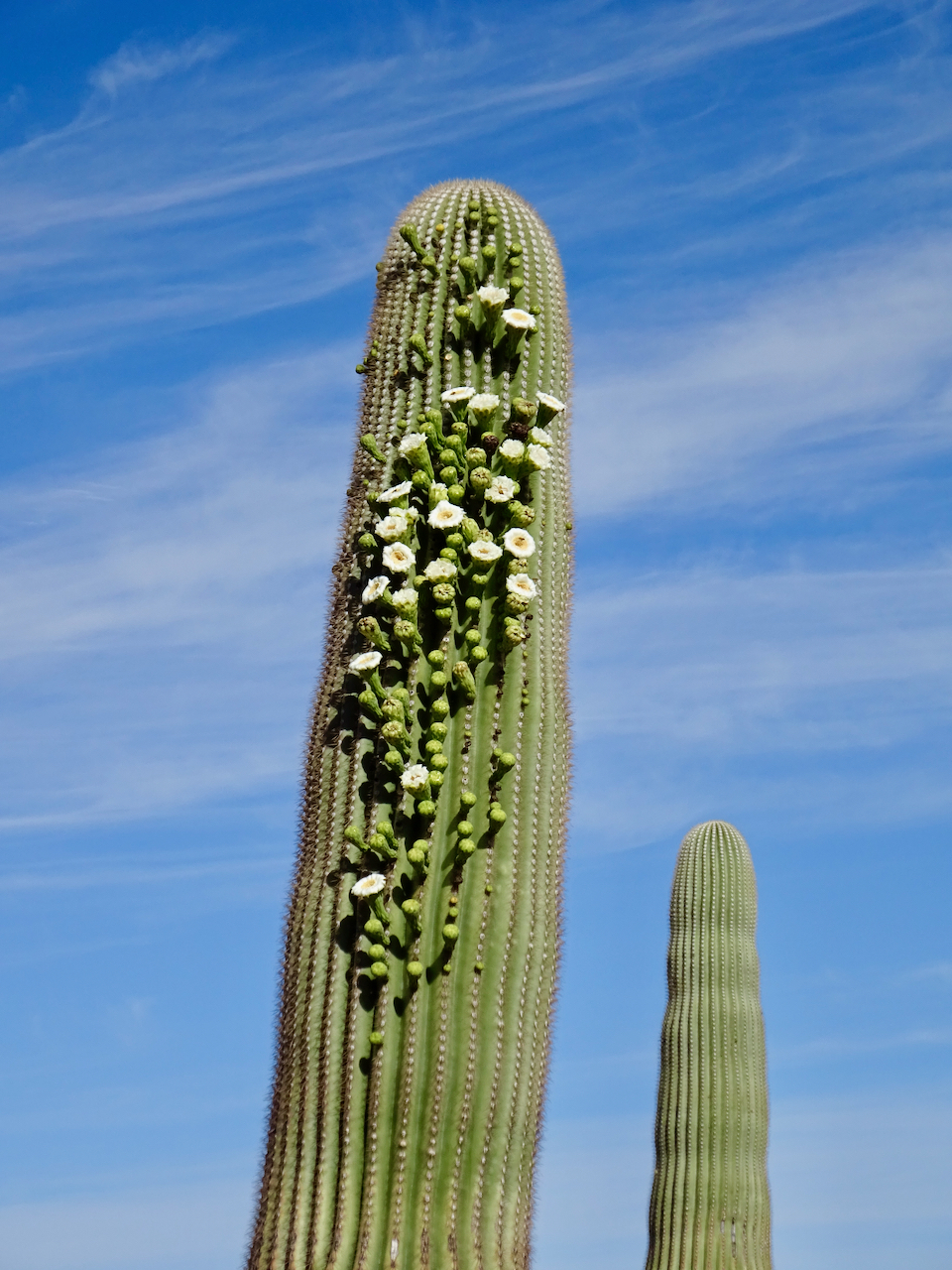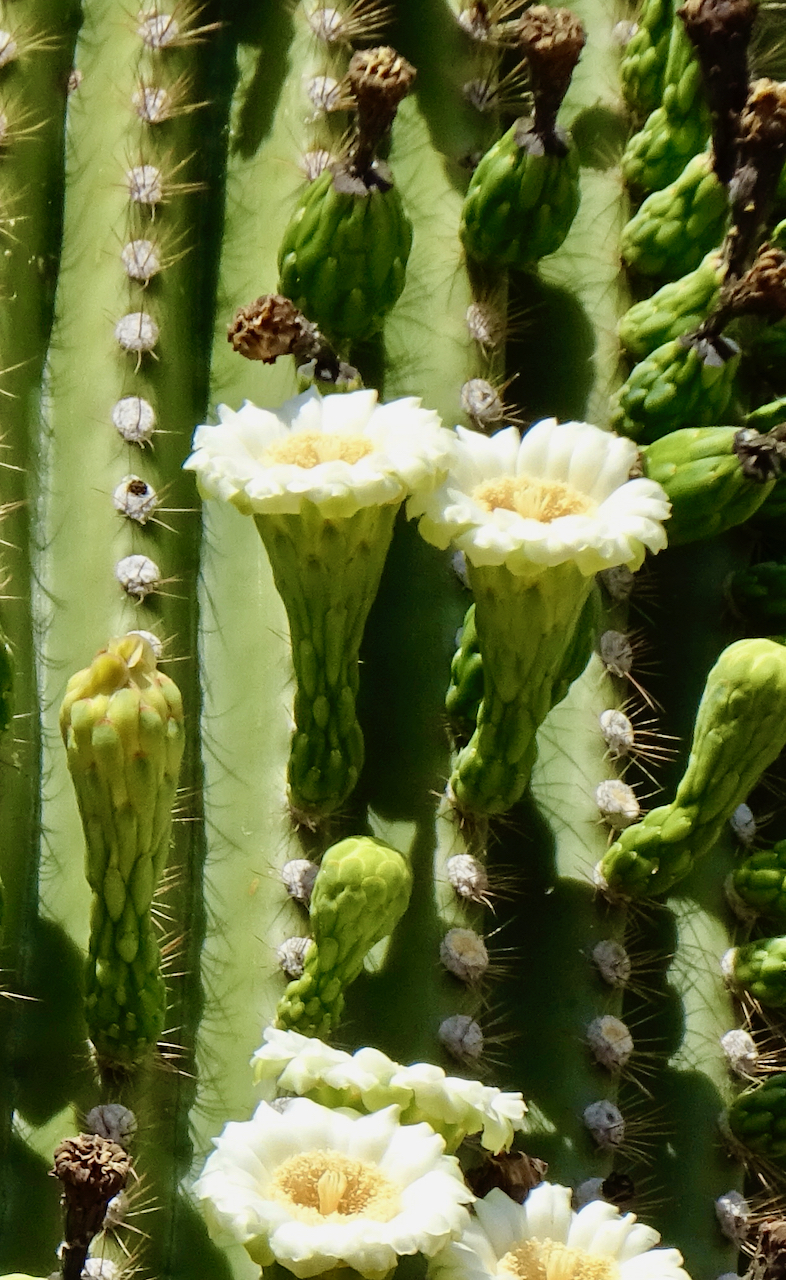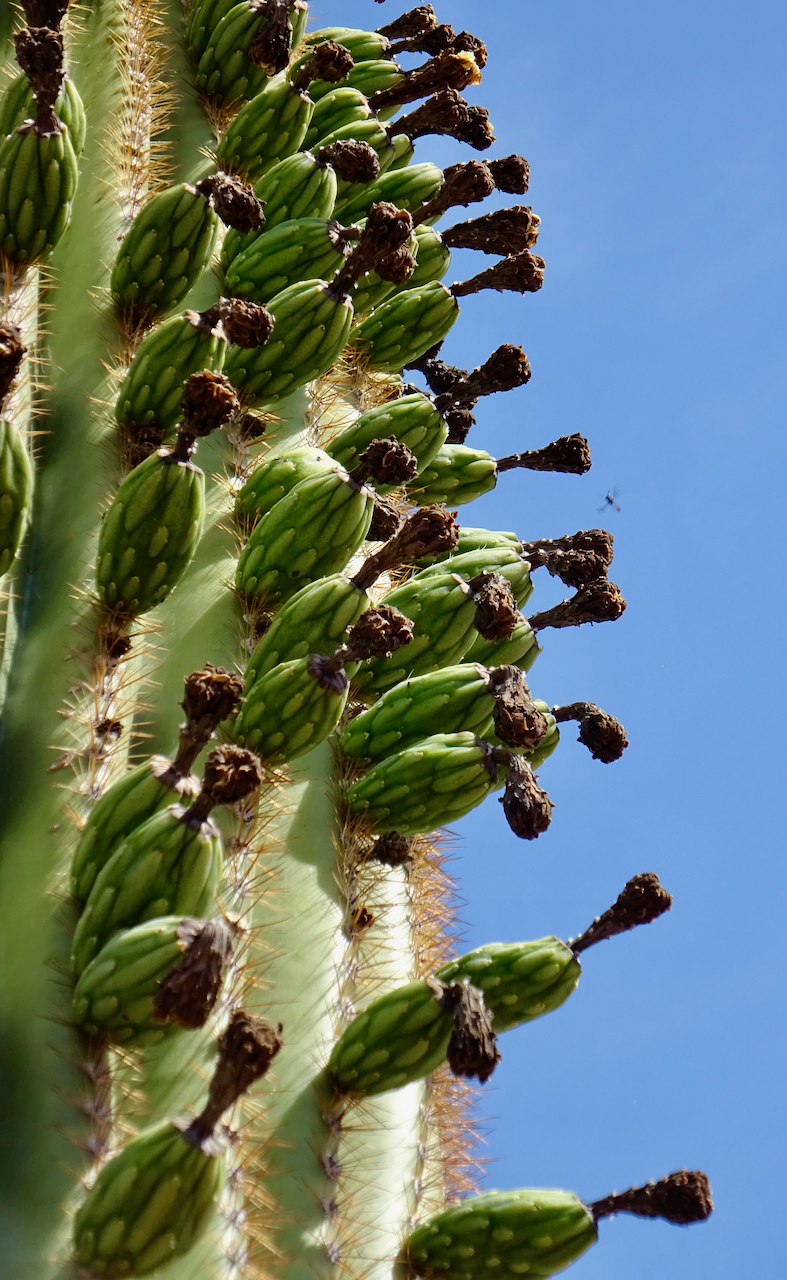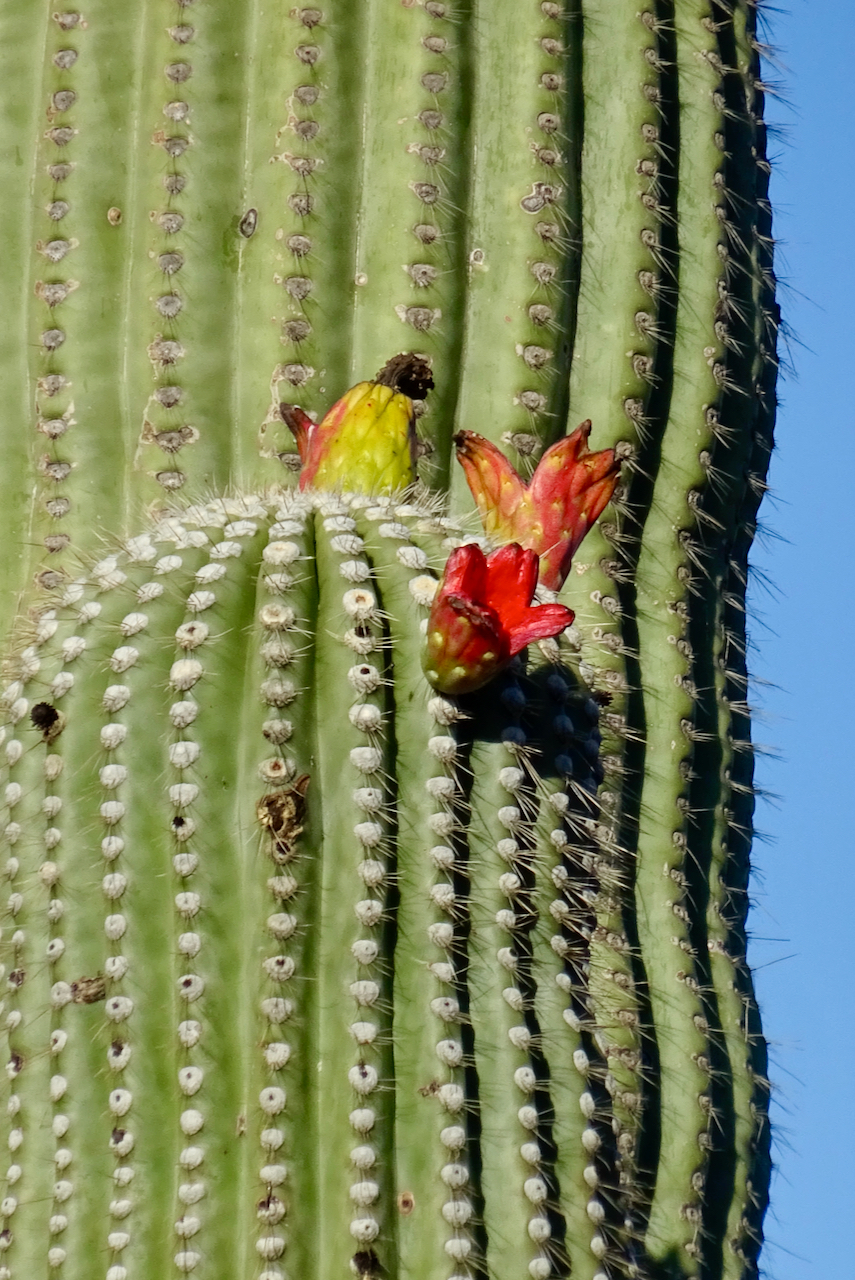Saguaro
Carnegiea gigantea
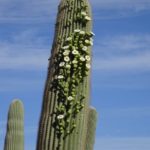
About the Plant
Saguaros, the largest cactus in the United States, are found only in the Sonoran Desert, in Arizona, California, and Mexico. Under optimal conditions, like those found in Saguaro National Park in the Tucson area, large saguaros can make a forest.
Slow growing, saguaros in the wild can take 30 years to reach a height of 3 feet. The first flowers appear when the plant is about 8 feet tall (40-75 years), the first arms when the saguaro is between 50 and 100 years of age. Growth is faster if ample water is provided and pampered plants can reach flowering size in as little as 15 years.
The unusual crested form of a saguaro cactus
Saguaros are available as both seed grown nursery plants and dug, rescued plants. Small rescued saguaros are often transplanted successfully (care must be taken in initial digging) and two people can plant a 2-3 foot saguaro. Larger saguaros, to 8-10 feet, can also be transplanted successfully but they are heavy and planting is best done by a professional. Once planted and established, saguaro need little care. Smaller plants can be placed in the shade of a tree.
If you are planting a saguaro, make sure to select a location with well-drained soil and away from irrigation or wet areas. Make sure the original orientation of the cactus is marked (for example, a black mark with a Sharpie on the south side) and then plant in that same orientation. Do not water for the first two weeks, then occasional watering (1x per month to 1 foot depth) during the hottest, driest months for about a year will help establishment. Do not water in winter. There is usually no need to water during monsoon.
Notes:
- Saguaros are Protected Arizona Native Plants. Digging and moving restrictions apply. If you are purchasing a rescued plant, make sure it has been harvested legally and that a native plant tag and seal accompanies the plant.
- The flower of the saguaro is the state flower of Arizona.
- Bacterial necrosis of saguaros is a serious disease that can spread to other saguaros. You can find out more info here, page 6. The large cactus shown below is infected and was removed.
Wildlife value: flowers provides food for bees, bats, birds. Fruit provides food for birds and other animals, including humans. Stem and arms provide nesting sites for woodpeckers and other birds (see photo below). Fallen saguaros become homes for snakes, rodents, lizards and other invertebrates. For more information, see the article in A Natural History of the Sonoran Desert cited below.
More Information
How to Transplant a Cactus from Arizona Cooperative Extension (see page 3)
Transplanting Saguaros from Central Arizona Cactus and Succulent Society
Horticultural information from ASU
Map of distribution in US (yellow means plant is rare)
Technical botanical description from SEINet
In books:
Field Guide to Cacti and Other Succulents of Arizona, Breslin, et al., page 36.
A Natural History of the Sonoran Desert by Arizona-Sonora Desert Museum, page 183. Read extract.
The Saguaro Cactus, a Natural History
